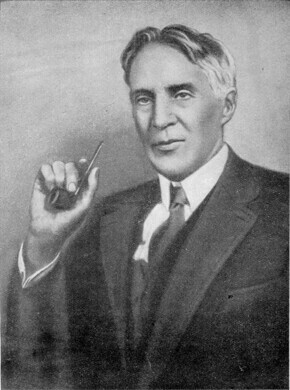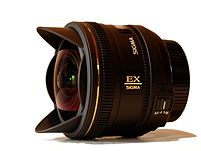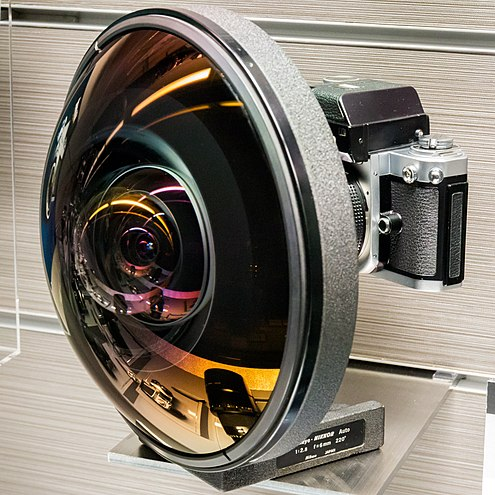A fisheye lens is an ultra-wide-angle lens designed for shooting wide angles, usually 180°. Fisheye lenses use a special mapping, instead of producing an image with straight lines of perspective. This gives the resulting images a characteristic convex non-rectilinear appearance.
Index
History
The term fisheye was introduced by an American physicist Robert W. Wood, in the year 1906. He published a paper detailing the experiment in which he built a camera in a water-filled pail starting with a photographic plate at the bottom.
A short focus lens with a pinhole diaphragm located approximately halfway up the pail and a sheet of glass at the rim to suppress ripples in the water.
The experiment was developed based on how a fish would see an ultrawide hemispherical view from beneath the water.

Types of Fisheye Lens
There are two main types of fisheye lens.
Full Frame Fisheye Lens
These types of lenses are capable of capturing a 180° field of view when measuring from corner to corner. They have a 180° diagonal angle of view. The horizontal and vertical angles of view will be smaller.

Circular Fisheye Lens
These were the first types of fisheye lenses to be developed. They are projected as a circle. They have a 180° vertical angle of view and the horizontal and diagonal angle of view are also 180°.

Characteristics of Fisheye Lens
- Focal length: Focal length of circular type is 8mm to 10mm generally. Full frame fisheye lenses have a 15mm to 16mm focal length.
- Angle of view: Fisheye lenses have an angle of view of 180°.
- Mapping function: The different mapping functions used are rectilinear, equidistant, equisolid, orthographic, and stereographic.
Applications
- Fisheye lenses are widely used in planetariums to project the night sky onto the interior of the dome.
- In order to create an immersive environment for pilots, flight simulators are used.
- Many photographers and videographers across the world use fisheye lenses for capturing close action shots without having to sacrifice the context background.
- Fisheye lenses are also used by astronomers to capture cloud cover data and light pollution data.
FAQs
Angle of view describes the angular extent of a given scene that is captured in an image by a camera.
